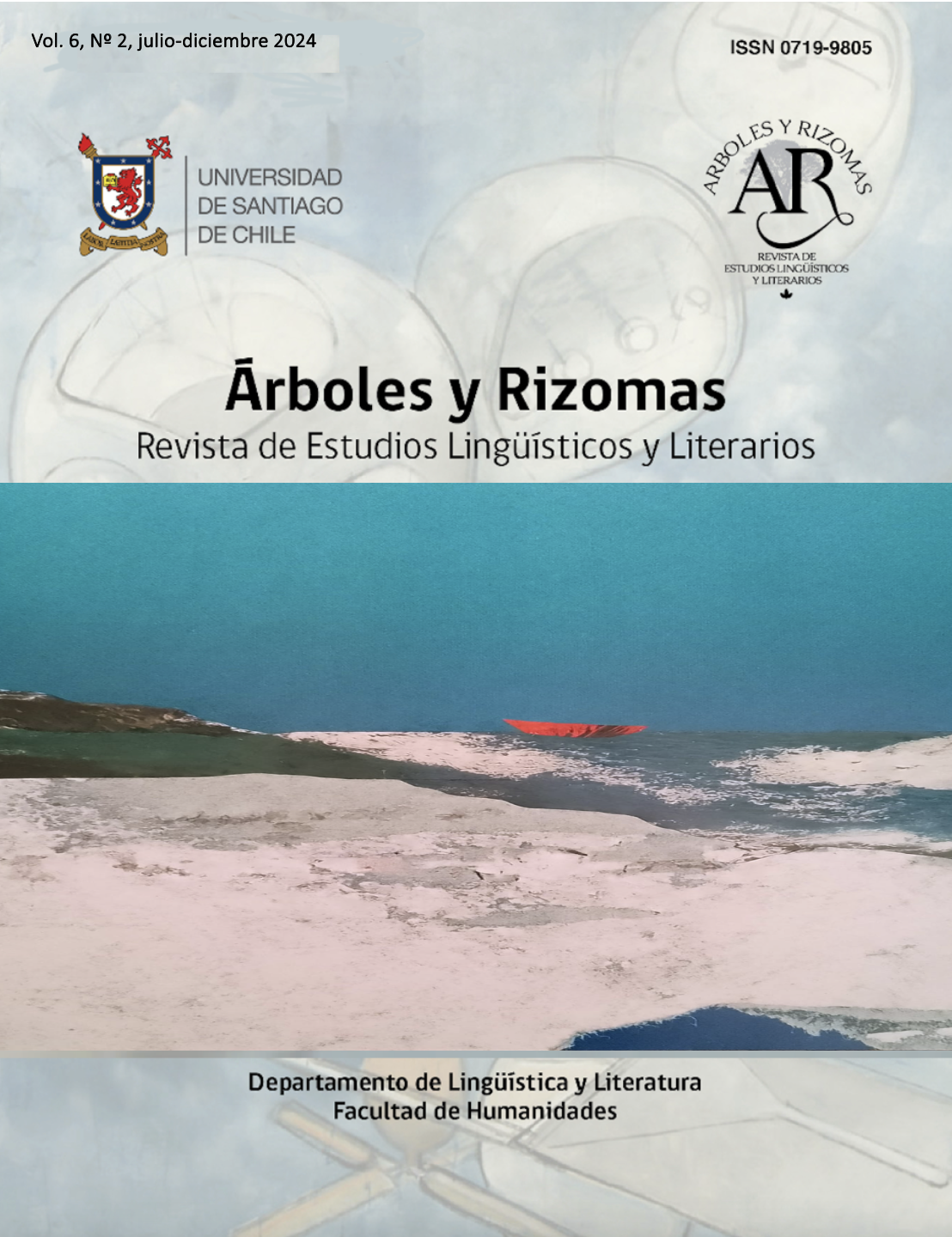Note: A review of models for the analysis of conceptual metonymy in cognitive semantics.
DOI:
https://doi.org/10.35588/ayr.v6i2.6752Keywords:
conceptual metonymy, cognitive semantics, curriculum, figure of speech, Chilean SpanishAbstract
This note presents an overview of five models to approach the phenomenon of conceptual metonymy within the framework of cognitive semantics (Lakoff & Johnson, 1986, Lakoff, 1987; Langacker, 1993; Kövecses & Radden, 1998, Radden & Kövecses, 1999; Warren, 1999 and 2006, Panther & Thornburg, 1998; and Littlemore, 2015 and 2017). The principles underpinning these theoretical proposals are described, their advantages and limitations are pointed out, and examples from Chilean Spanish are provided. The objective of this review is to bring specialized knowledge about conceptual metonymy closer to schools in Chile, where the curriculum includes this figure of speech.
Downloads
References
Barcelona, A. (2012). La metonomia conceptual. En I. Ibarretxe-Antuñano y J. Valenzuela (Dirs.), Lingüística cognitiva (pp. 123-143). Anthopos.
Centro de Perfeccionamiento, Experimentación e Investigaciones Pedagógicas (CPEIP). (2022a). Estándares Pedagógicos y Disciplinarios para Carreras de Pedagogía en Educación General Básica. Ministerio de Educación, Gobierno de Chile. https://estandaresdocentes.mineduc.cl/wp-content/uploads/2023/05/basica_2023_digital.pdf
Centro de Perfeccionamiento, Experimentación e Investigaciones Pedagógicas (CPEIP). (2022b). Estándares Pedagógicos y Disciplinarios para Carreras de Pedagogía en Lenguaje Educación Media. Ministerio de Educación, Gobierno de Chile. https://estandaresdocentes.mineduc.cl/wp-content/uploads/2023/05/EPD-Lenguaje-Media.pdf
Evans, V. & Green, M. (2006). Cognitive Linguistics: An Introduction. Edinburgh University Press.
Geeraerts, D. (2021). Cognitive Semantics. En X. Wen y J.R. Taylor (Eds.), The Routledge Handbook of Cognitive Linguistics (pp. 19-29). Routledge.
Kövecses, Z. & Radden, G. (1998). Metonymy: Developing a Cognitive Linguistic View. Cognitive Linguistics, 9(1), 37-77. https://doi.org/10.1515/cogl.1998.9.1.37
Lakoff, G. & Johnson, M. (1986). Metáforas de la vida cotidiana. Cátedra.
Lakoff, G. (1987). Women, Fire, and Dangerous Things: What Categories Reveal about the Mind. The University of Chicago Press.
Langacker, R. W. (1993). Reference-point constructions. Cognitive Linguistics, 4(1), 1-38. https://doi.org/10.1515/cogl.1993.4.1.1
Littlemore, J. (2015). Metonymy: Hidden Shortcuts in Language, Thought and Communication. Cambridge University Press.
Littlemore, J. (2017). Metonymy. En B. Dancygier (Ed.), The Cambridge Handbook of Cognitive Linguistics (pp. 407-422). Cambridge University Press.
Panther, K-U & Thornburg, L. (1998). A cognitive approach to inferencing in conversation. Journal of Pragmatics, 30(6), 755–769.https://doi.org/10.1016/S0378-2166(98)00028-9
Panther, K-U & Thornburg, L. (2018). Metaphor and Metonymy in Language and Thought: A Cognitive Linguistic Approach. Synthesis Philosophica, 64(2), 271-294. https://hrcak.srce.hr/file/294778
Peña Cervel, M.S. y Ruiz de Mendoza Ibáñez, F. J. (2010). Los modelos cognitivos idealizados. En R. Mairal Usan, M. S. Peña Cervel, F. J. Cortés Rodríguez y F. J. Ruiz de Mendoza Ibáñez (Eds.), Teoría lingüística: métodos, herramientas y paradigmas (pp. 231-285). Editorial Universitaria Ramón Areces.
Radden, G. & Kövecses, Z. (1999). Towards a Theory of Metonymy. En K-U Panther y G. Radden (Eds.), Metonymy in Language and Thought (pp. 17-59). John Benjamins.
Ruiz de Mendoza Ibáñez, F. J. y Galera-Masegosa, A. (2012). Modelos cognitivos, operaciones cognitivas y usos figurados del lenguaje. Forma y función, 25(2), 11-38.https://www.redalyc.org/pdf/219/21928398001.pdf
Warren, B. (1999). Aspects of Referential Metonymy. En K-U Panther y G. Radden (Eds.), Metonymy in Language and Thought (pp. 121-135). John Benjamins.
Warren, B. (2006). Referential metonymy. Lund University.
Downloads
Submitted
2024-07-01Published
Issue
Section
License
Copyright (c) 2024 Horacio Román-Navarro, Fredy Núñez-Torres

This work is licensed under a Creative Commons Attribution 4.0 International License.






